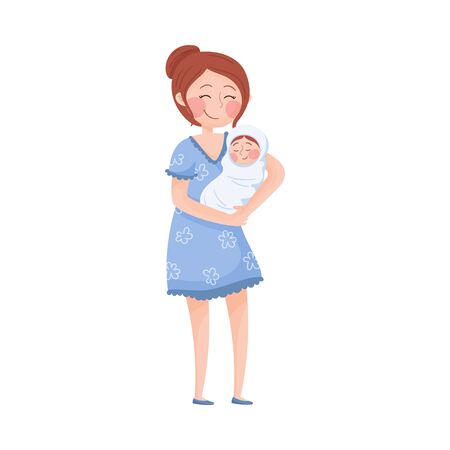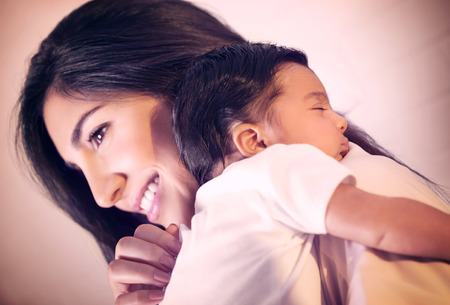1. Understanding Newborn Reflexes
Newborns enter the world with a set of automatic movements called reflexes. These involuntary actions help them adapt to their new environment and are key indicators of healthy development. Reflexes are controlled by the nervous system and typically disappear as babies grow and gain more control over their movements.
What Are Newborn Reflexes?
Newborn reflexes are instinctive responses to stimuli, such as touch or sound. These reflexes ensure survival in the early days of life and lay the foundation for future motor skills. Some reflexes help babies find food, while others protect them from harm.
Common Newborn Reflexes
Here are some common newborn reflexes you may notice in your baby:
| Reflex | Description | When It Disappears |
|---|---|---|
| Moro Reflex (Startle Reflex) | The baby flings out their arms and legs when startled by a loud noise or sudden movement. | By 4-6 months |
| Rooting Reflex | The baby turns their head and opens their mouth when their cheek is stroked, helping them find a nipple for feeding. | By 4 months |
| Sucking Reflex | The baby automatically sucks when something touches the roof of their mouth. | Around 4 months |
| Palmar Grasp Reflex | The baby tightly grasps an object placed in their palm. | By 5-6 months |
| Tonic Neck Reflex (Fencing Position) | The baby turns their head to one side, extending the arm on that side while bending the opposite arm. | By 5-7 months |
| Stepping Reflex | The baby makes stepping motions when held upright with feet touching a surface. | Around 2 months |
Why Are Reflexes Important?
Pediatricians check newborn reflexes during routine exams to assess brain and nerve function. The presence, strength, and timing of these reflexes provide insight into your babys neurological development. If a reflex is absent or persists longer than expected, it may signal an underlying issue that requires further evaluation.
Caring for Your Baby’s Reflexes
You don’t need to do anything special to encourage these reflexes—they are natural responses that will fade as your baby grows. However, understanding them can help you respond appropriately to your babys needs. For example, knowing about the rooting reflex can make breastfeeding easier, and being aware of the startle reflex can help you swaddle your baby securely for comfort.
2. Common Reflexes and Their Purpose
Newborns are born with a set of reflexes that help them adapt to their new environment. These reflexes are automatic movements that serve important roles in early development. Let’s explore some of the key newborn reflexes and what they mean for your baby’s growth.
Moro Reflex (Startle Reflex)
The Moro reflex, also known as the startle reflex, is triggered when a baby experiences a sudden movement or loud noise. Your baby will respond by extending their arms and legs outward, then bringing them back in close to their body. This reflex helps infants react to potential danger and typically disappears around 4 to 6 months of age.
Rooting Reflex
The rooting reflex is essential for feeding. When you gently stroke your babys cheek, they will turn their head toward the touch and open their mouth. This reflex helps newborns find the breast or bottle for feeding. It usually fades by 4 months as babies gain more control over their movements.
Grasp Reflex
If you place your finger in your babys palm, they will instinctively grasp it tightly. This is known as the grasp reflex, and it demonstrates early motor development. The grasp reflex begins to fade around 3 to 6 months as babies develop voluntary hand movements.
Overview of Newborn Reflexes
| Reflex | Description | Disappears By |
|---|---|---|
| Moro Reflex | Baby extends arms and legs when startled | 4-6 months |
| Rooting Reflex | Baby turns head toward touch on cheek | Around 4 months |
| Grasp Reflex | Baby tightly grips objects placed in palm | 3-6 months |
Why Are These Reflexes Important?
Newborn reflexes are crucial indicators of neurological development. They ensure that babies can respond to their surroundings, feed properly, and begin developing motor skills. If a reflex seems absent or overly exaggerated, consult your pediatrician to ensure healthy development.

3. Tracking Your Baby’s Responses
Newborns come into the world with a set of natural reflexes that help them adapt to their environment. These reflexes are essential signs of your baby’s neurological development, and tracking them can give you peace of mind that everything is progressing as expected.
Common Newborn Reflexes
Your baby will display several instinctive movements in their first few months. Here are some key reflexes to watch for:
| Reflex | Description | When It Fades |
|---|---|---|
| Moro Reflex (Startle Reflex) | Your baby suddenly extends their arms and legs when startled by a loud sound or movement. | Around 2-4 months |
| Rooting Reflex | If you touch your baby’s cheek, they will turn their head and open their mouth, searching for food. | Around 4 months |
| Sucking Reflex | Your baby instinctively sucks when something touches the roof of their mouth. | Around 4 months |
| Grasp Reflex | Your baby tightly grips anything placed in their palm. | Around 5-6 months |
| Tonic Neck Reflex (Fencer’s Pose) | Your baby turns their head to one side, extending the arm on that side while bending the opposite arm. | Around 5-7 months |
| Babinski Reflex | Their toes fan out when you stroke the bottom of their foot. | Around 12 months |
How to Track Your Baby’s Reflexes
You can observe these reflexes during everyday activities like feeding, diaper changes, and playtime. Here are some tips to help you track your baby’s responses:
Create a Simple Log
You don’t need anything fancy—just a notebook or notes app where you jot down when you see each reflex and any changes over time.
Use Playtime for Observations
Cuddle time and tummy time provide great opportunities to notice reflexive movements like grasping or turning toward sounds.
Pace Yourself and Be Patient
Your baby may not display every reflex at every moment. Try checking at different times of the day when they’re awake and alert.
When to Talk to Your Pediatrician
If your baby isn’t showing expected reflexes or if they persist longer than usual, it’s always a good idea to check with your pediatrician. Early detection of developmental concerns can make a big difference in ensuring your little one gets the right support.
4. When Reflexes Change or Disappear
As your baby grows, their reflexes will naturally change and fade away. This is a normal part of development and shows that their nervous system is maturing. Understanding when these reflexes typically disappear can help you track your babys progress.
Common Reflexes and When They Fade
Most newborn reflexes are temporary and will gradually disappear as your baby gains more control over their movements. Here’s a general timeline for some key reflexes:
| Reflex | Typical Disappearance Age |
|---|---|
| Moro Reflex (Startle Reflex) | Around 2-4 months |
| Rooting Reflex | Around 4 months |
| Palmar Grasp Reflex | Around 5-6 months |
| Tonic Neck Reflex (Fencing Reflex) | Around 5-7 months |
| Stepping Reflex | Around 2 months |
Why Reflex Changes Matter
The disappearance of newborn reflexes is a sign that your babys brain and muscles are developing. As these automatic movements fade, they are replaced by more intentional motor skills, like reaching, grasping, and rolling over.
If Reflexes Persist Too Long
If certain reflexes don’t fade within the expected time frame, it might indicate a developmental delay. Talk to your pediatrician if you notice reflexes persisting beyond the usual age range.
Caring for Your Baby During This Transition
You can support your baby’s development by encouraging movement and interaction. Simple activities like tummy time, gentle stretching, and playful interactions help strengthen their muscles and coordination.
5. When to Talk to Your Pediatrician
As your baby grows, their reflexes and responses should follow a natural developmental timeline. While every baby is different, certain delays or irregularities might indicate the need for a check-up with your pediatrician. Understanding what’s typical and what might be a cause for concern can help you ensure your little one is on track.
Signs to Watch For
Newborn reflexes typically appear and disappear within expected time frames. If you notice any of the following issues, it may be a good idea to consult your pediatrician:
| Reflex | Typical Disappearance Age | When to Be Concerned |
|---|---|---|
| Moro (Startle) Reflex | Around 4-6 months | If absent in newborns or persists beyond 6 months |
| Rooting Reflex | Around 4 months | If absent in newborns or persists beyond 4 months |
| Palmar Grasp Reflex | Around 5-6 months | If absent in newborns or persists beyond 6 months |
| Tonic Neck Reflex (Fencers Pose) | Around 5-7 months | If absent in newborns or persists beyond 7 months |
| Babinski Reflex | Around 12-24 months | If absent in newborns or persists beyond 2 years |
Poor or Asymmetrical Reflexes
If your baby’s reflexes seem weaker than expected or appear more on one side of their body than the other, it could indicate an issue with muscle tone or neurological development. Mention any concerns about uneven movements to your doctor.
No Response to Stimuli
If your baby does not react to sudden sounds, touch, or light changes, it may be worth discussing with your pediatrician. Babies should naturally respond to their environment, and a lack of response could indicate hearing, vision, or neurological concerns.
Your Parental Instinct Matters
You know your baby best! If something feels off—whether its delayed reflexes, unusual stiffness, excessive floppiness, or anything else that doesn’t seem right—trust your instincts and bring it up with your pediatrician. Early intervention can make a significant difference in addressing potential developmental concerns.
Scheduling a Pediatric Visit
Your baby will have regular well-check visits where their doctor will assess reflexes and development. However, if you notice any of the concerns mentioned above between scheduled visits, don’t hesitate to reach out for reassurance and guidance.
Pediatricians are there to support both you and your baby throughout this journey. If you have any doubts about how your little one is progressing, a quick check-up can provide peace of mind and ensure they’re growing strong and healthy.


